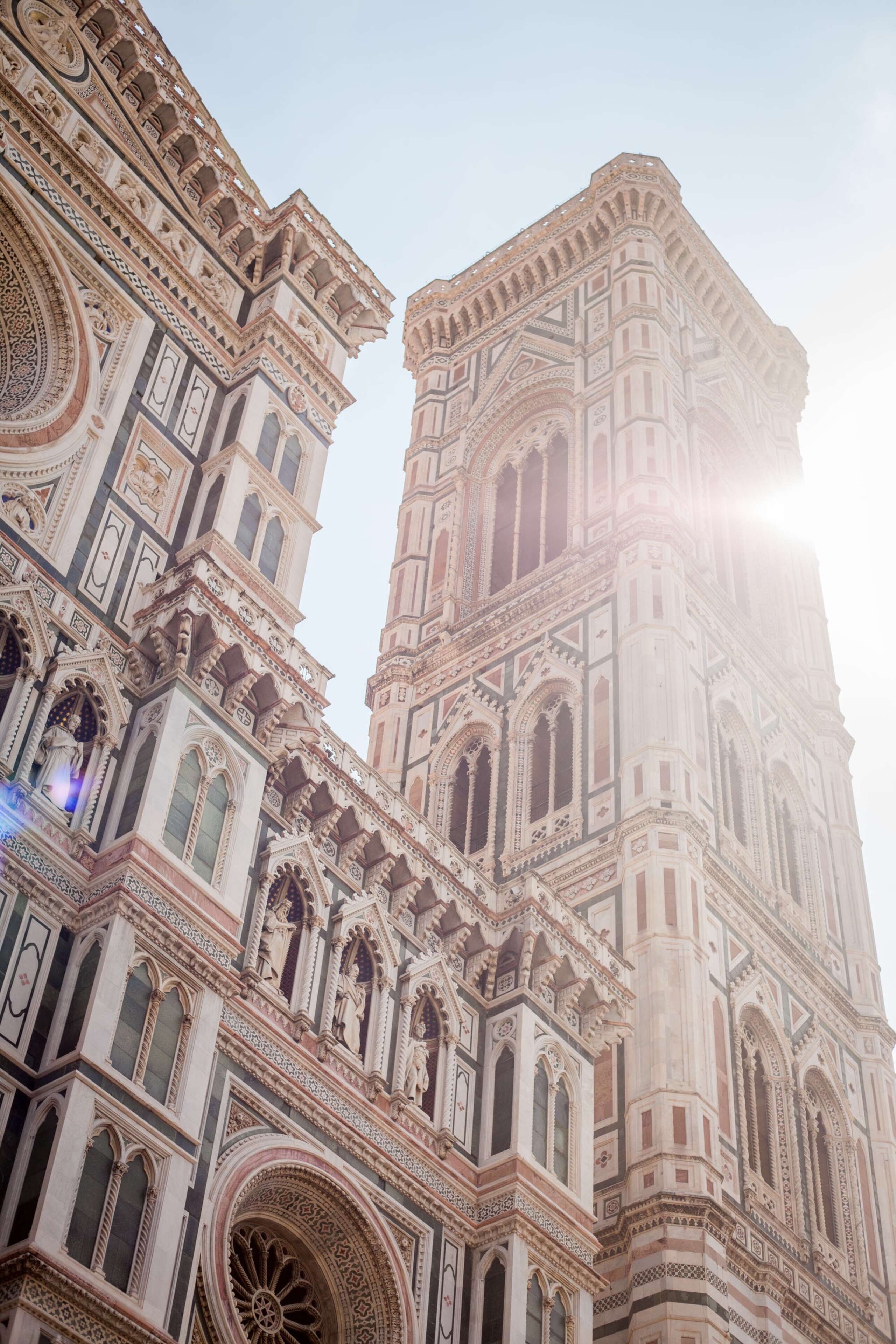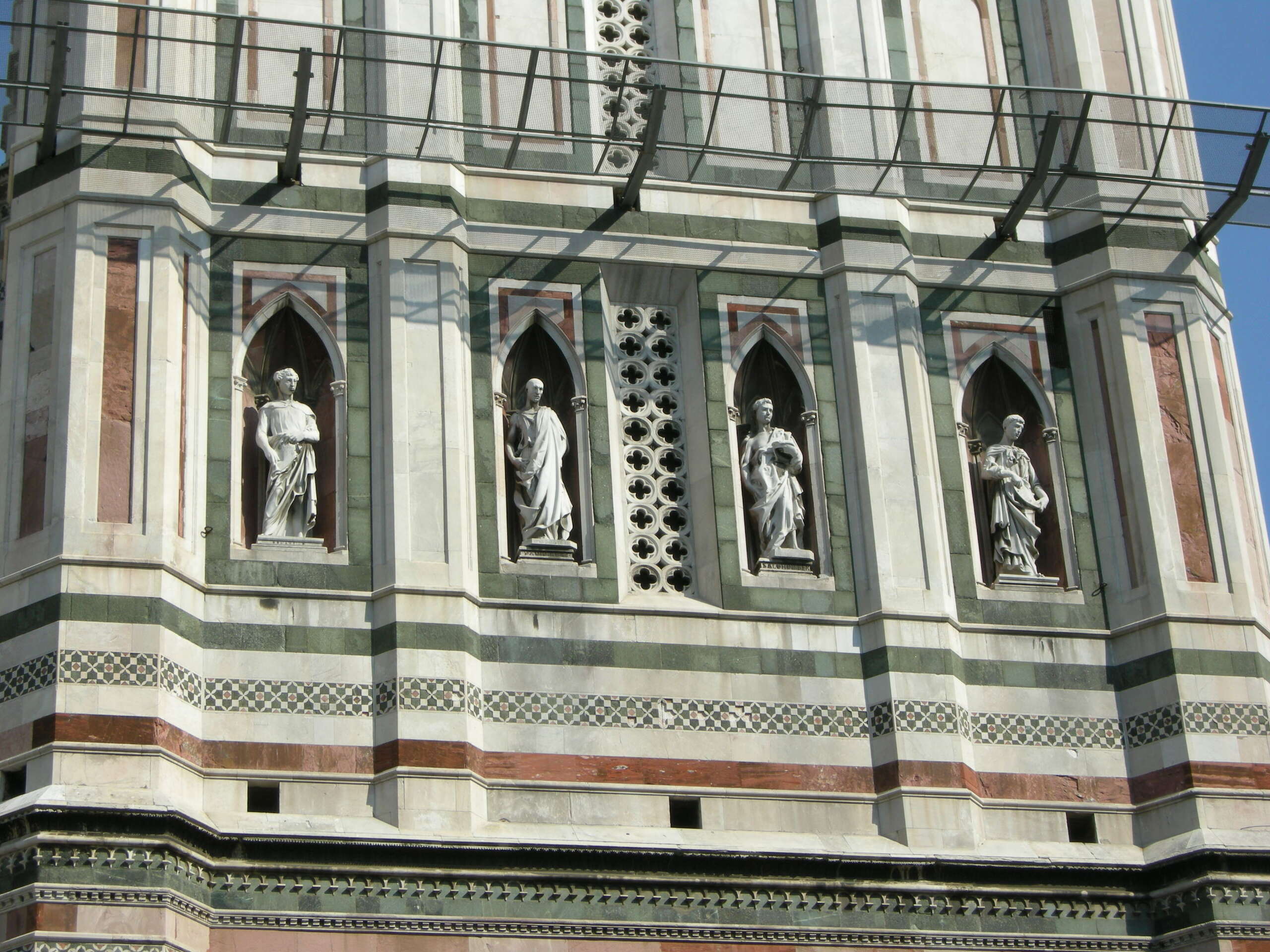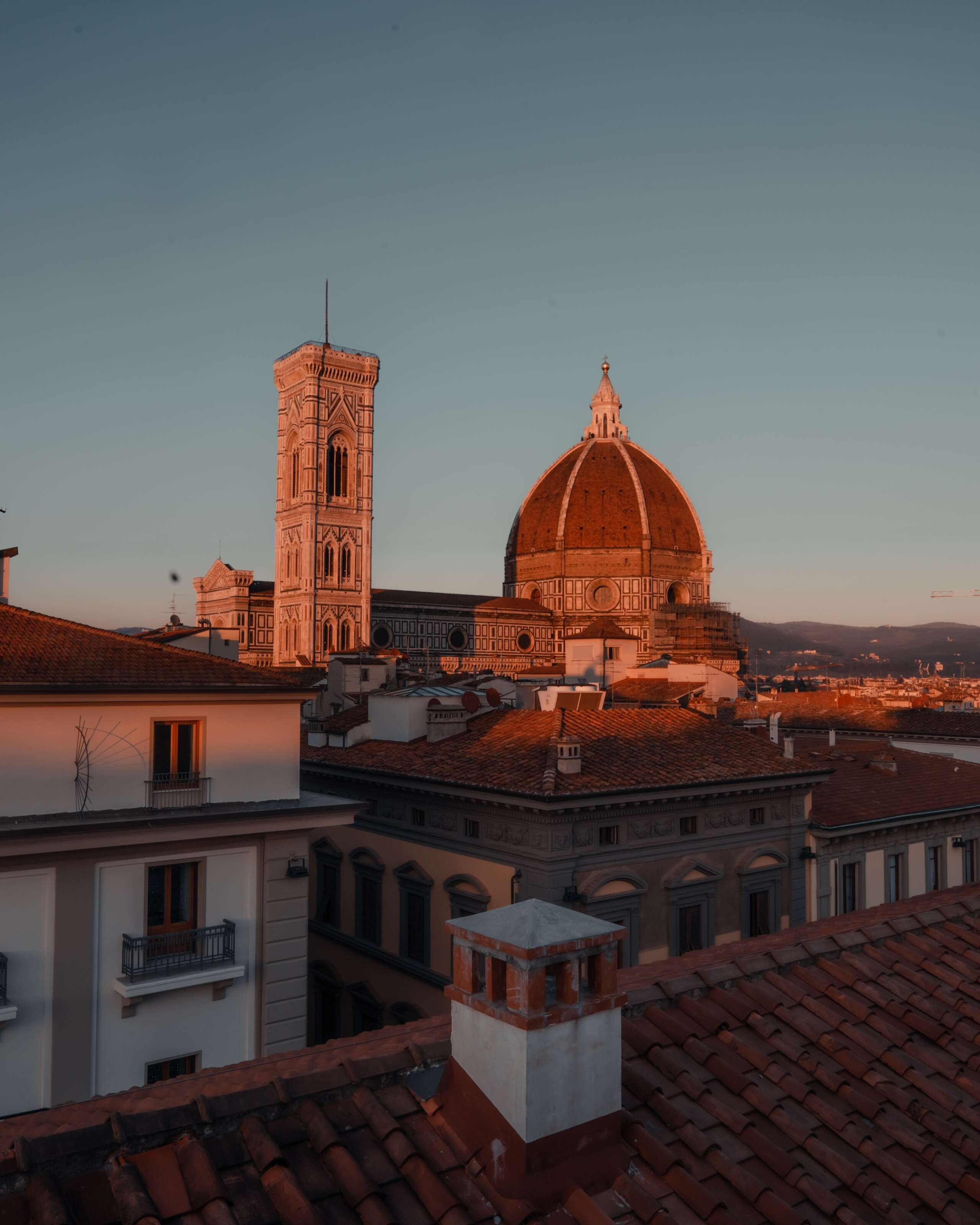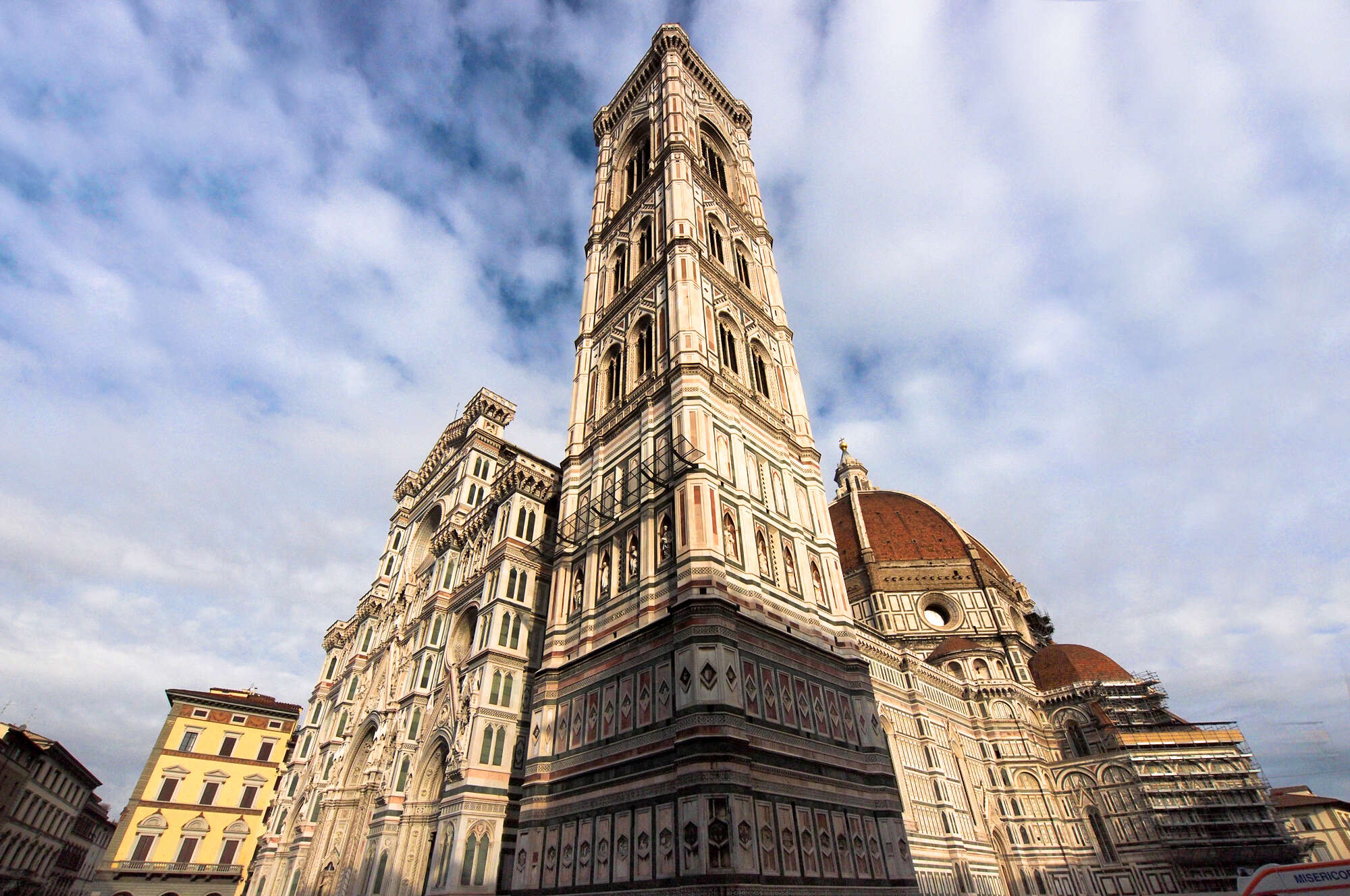Campanile di Giotto
A leading example of Italian Romanesque architecture and one of the most significant buildings in the history of Western art, the Campanile di Giotto is admired by visitors from all over the world. The Campanile di Giotto is a free-standing campanile that is part of the complex of buildings that make up Florence Cathedral on the Piazza del Duomo in Florence.
Florentine architectural marvel
The tower's magnificence is due to the combined contributions of artist Giotto di Bondone and structural engineer Francesco Talenti – two geniuses who brought their own visions for a more beautiful Florence to life. The tower designed by the artist Giotto di Bondone was built between 1334 and 1359 on the site of an earlier tower destroyed by lightning. It's almost 85 meters tall and has 414 steps.
The main feature of the tower is its geometric simplicity. It consists of five stages, each with a different architectural style, from Gothic to Renaissance. The lower section has a square base with blind arches forming niches where 14 statues of patriarchs and prophets by Donatello, Andrea Pisano and Luca della Robbia were placed between in the 15th century.
At the top are seven bells that ring at various times during the day. From here you can also enjoy stunning views over Piazza del Duomo and Florence's rooftops. The top tier has a wide opening (occhio or eye) on all four sides, which allows light to enter and illuminate the interior spaces during the day.
Art treasure of the bell tower
Works of art on display include Giambologna's 16th-century marble sculpture of The Rape of a Sabine and Paolo Uccello's 15th-century terra cotta bust Portrait of a Lady. The hexagonal panels below show reliefs of various saints, prophets, and allegories.
The tower is made of marble from Carrara, Siena and Ambra. It has two distinct levels: a lower one on a square plan with 13th-century sculptures and an upper one with lancet windows.
The sculptures on the lower level include three panels portraying Madonna and Child with Saints by Andrea Pisano, who also sculpted the statues surrounding them. Above these are trefoil panels with reliefs of Christ between angels, symbols of the Four Evangelists and depictions of prophets David, Isaiah, Jeremiah and Daniel – all these works are also by Pisano.













